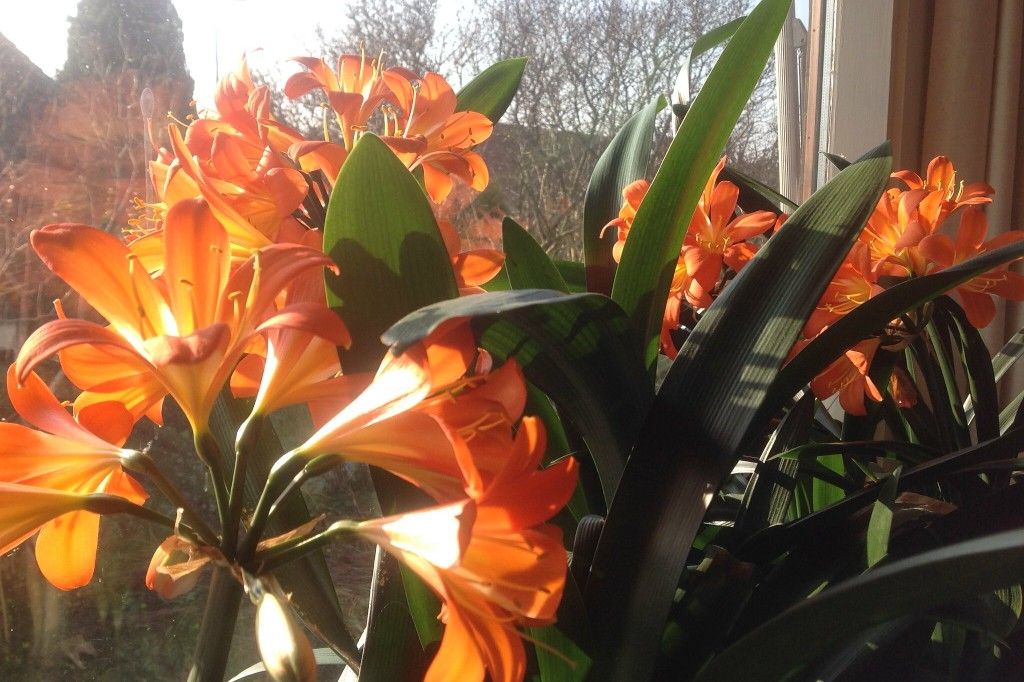They can be grown from divisions or from seeds if you cut the berries once they have turned shiny red and harvest the seeds from them. Place them in a potting medium that barely covers them and keep the soil moist. They can take months to germinate, and once they do, the seedlings need bright light but no direct sun. In three years, they will be ready to bloom. Clivias produce large orange-colored, trumpet-shaped blooms held aloft above their strap like leaves, in January when we need flowers most.
Once established they are easy-care houseplants, only needing warmth all summer followed by a cool period. They are known for their ability to tolerate neglect and there are many jokes about how long they can be left untended (e.g., left in vacant houses for years etc.). They tolerate shady windowsills, are immune to most pests, don’t have to be repotted for years, and enjoy being pot bound and not watered much.
Most produce orange flowers, but you can impress a gardener by ordering a clivia for them as a holiday gift and making sure it is one that produces yellow blooms, as yellow is quite rare and treasured by knowledgeable gardeners.
Clivia is named after Lady Clive who first took them to England from India to grow there in greenhouses many years ago.
This is Moya Andrews, and today we focused on clivia care.










